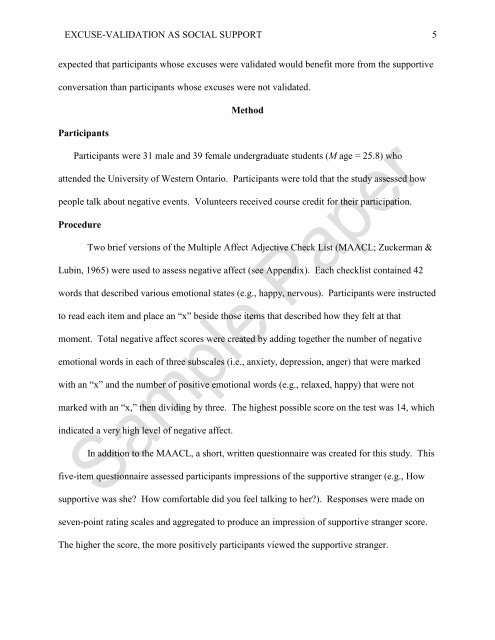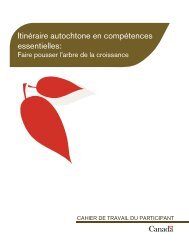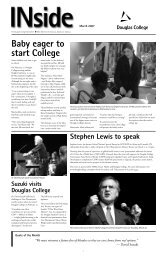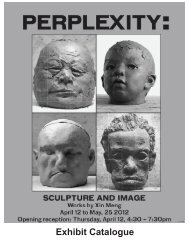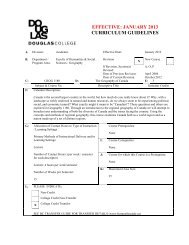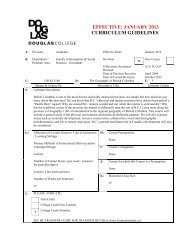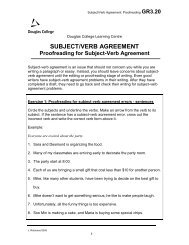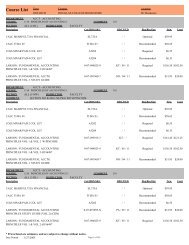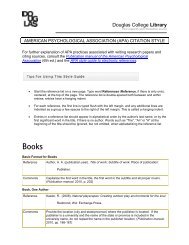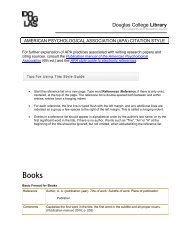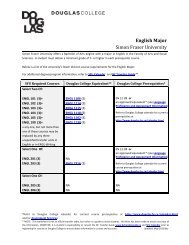An Introduction to APA Style - Douglas College
An Introduction to APA Style - Douglas College
An Introduction to APA Style - Douglas College
You also want an ePaper? Increase the reach of your titles
YUMPU automatically turns print PDFs into web optimized ePapers that Google loves.
EXCUSE-VALIDATION AS SOCIAL SUPPORT 5<br />
expected that participants whose excuses were validated would benefit more from the supportive<br />
conversation than participants whose excuses were not validated.<br />
Participants<br />
Method<br />
Participants were 31 male and 39 female undergraduate students (M age = 25.8) who<br />
attended the University of Western Ontario. Participants were <strong>to</strong>ld that the study assessed how<br />
people talk about negative events. Volunteers received course credit for their participation.<br />
Procedure<br />
Two brief versions of the Multiple Affect Adjective Check List (MAACL; Zuckerman &<br />
Lubin, 1965) were used <strong>to</strong> assess negative affect (see Appendix). Each checklist contained 42<br />
words that described various emotional states (e.g., happy, nervous). Participants were instructed<br />
<strong>to</strong> read each item and place an “x” beside those items that described how they felt at that<br />
moment. Total negative affect scores were created by adding <strong>to</strong>gether the number of negative<br />
emotional words in each of three subscales (i.e., anxiety, depression, anger) that were marked<br />
with an “x” and the number of positive emotional words (e.g., relaxed, happy) that were not<br />
marked with an “x,” then dividing by three. The highest possible score on the test was 14, which<br />
indicated a very high level of negative affect.<br />
In addition <strong>to</strong> the MAACL, a short, written questionnaire was created for this study. This<br />
five-item questionnaire assessed participants impressions of the supportive stranger (e.g., How<br />
supportive was she? How comfortable did you feel talking <strong>to</strong> her?). Responses were made on<br />
seven-point rating scales and aggregated <strong>to</strong> produce an impression of supportive stranger score.<br />
The higher the score, the more positively participants viewed the supportive stranger.


